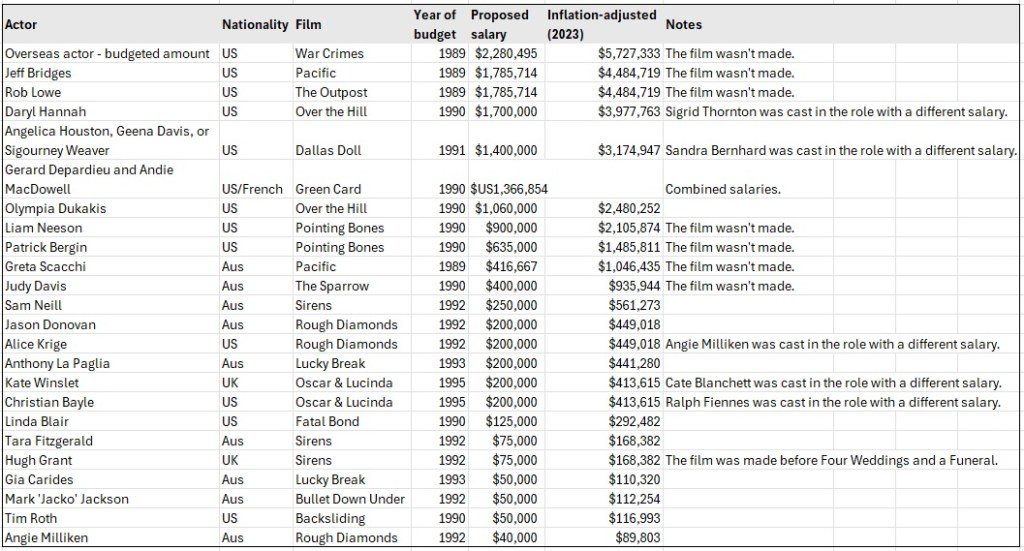Producers will have more financial firepower to attract Hollywood stars to appear in local productions when the government scraps a long-standing cap on ‘above-the-line’ expenditure from July 1.
It will even the playing field between offshore productions shooting in Australia and local small-screen dramas, which both receive a 30 per cent offset on expenditure (via the Location Offset – which had no above-the-line cap, and the Producer Offset).
While a high-profile actor is often crucial to attract financing, their astronomical salaries have made the strategy a precarious balancing act for decades. The government’s funding agency, the Film Finance Corporation (merged into Screen Australia in 2008), was a firm supporter of casting overseas actors in lead roles, often over Australian actors.
In 1989, the FFC’s investment team approved a $2.28 million salary ($US1.7 million plus $A74,000 in expenses) for a yet-to-be-cast US actor to appear in the futuristic sci-fi film War Crimes, written by famed Australian writer Peter Carey (see table below). The $8.4 million film was never made.
Many of the million-dollar-plus salaries ($3-$5 million adjusted for inflation) aimed to attract stars of the day such as Jeff Bridges, Rob Lowe, Daryl Hannah, Geena Davis, and Liam Neeson, never eventuated.
However, Oscar-winner Olympia Dukakis was paid $1.06 million (and also had a pay-or-play deal) to appear in Australian outback odyssey Over the Hill. The production was difficult and the film failed commercially when it was released in 1992.
The typical US star salary – revealed in documents released by the National Archives of Australia – was often 4-5 times higher than high-profile Australian actors. Local stars such as Sam Neill, Judy Davis, and Greta Scacchi were more typically paid in the $200,000-$400,000 range in the late 80s and early 90s.
The door to cast more offshore actors would be opened further. In March 1992, then-FFC chair Jim Spigelman wrote to Prime Minister Paul Keating to caution him against cutting the agency’s film funding budget in half, which would “leave us with a crippled industry”.
“There is a change which would, in my opinion, increase the possibility of profits from Australian product and therefore reduce demands on the Budget in future years,” he wrote. “I am thinking particularly of the quantitative restrictions imposed on the use of imported actors. I must emphasise that the FFC only invests in films which are certified in accordance with long-standing procedures to be sufficiently Australian in their overall content.”
Today, the pressure to cast high-profile names remains as strong as ever.
Find out more about the genesis of the Australian film industry, including the story behind Olympia Dukakis’ Over the Hill, in the book Money, art and madness: How the war between bureaucrats & auteurs killed the Australian film industry, which was recently ranked number one in Amazon’s ‘Performing Arts Category’.
US actor versus Australian actor salaries in the early-1990s



